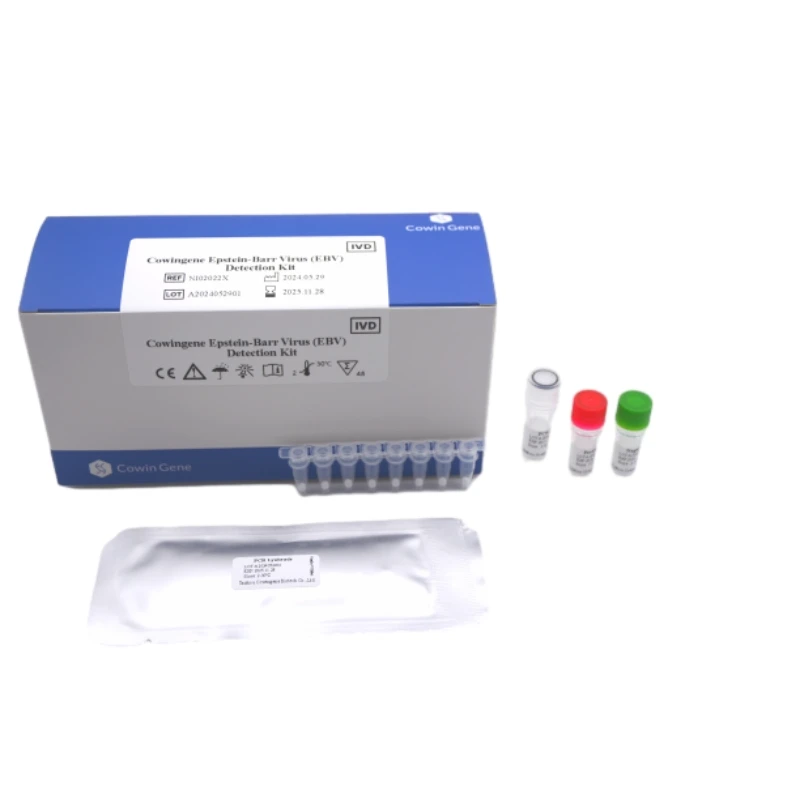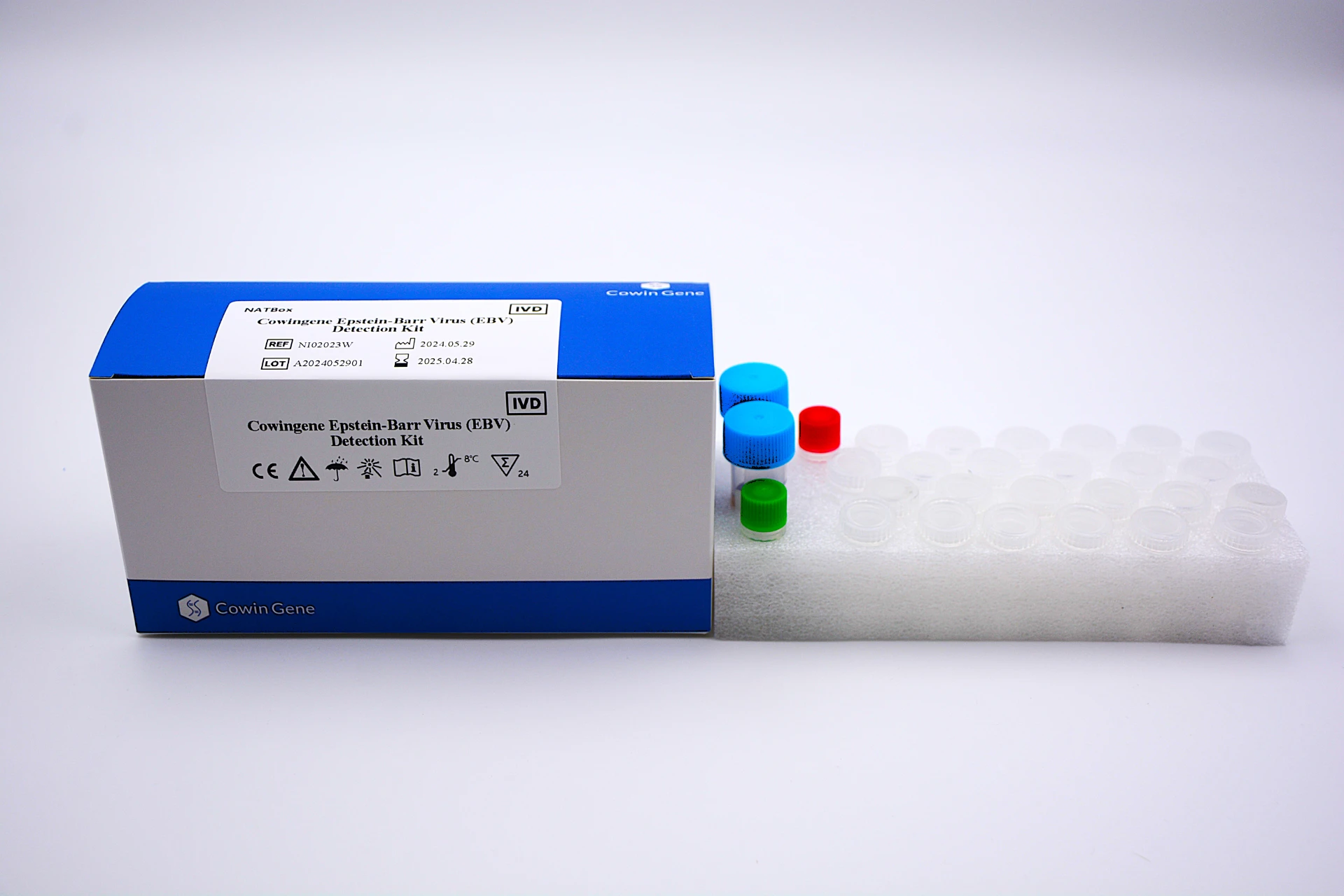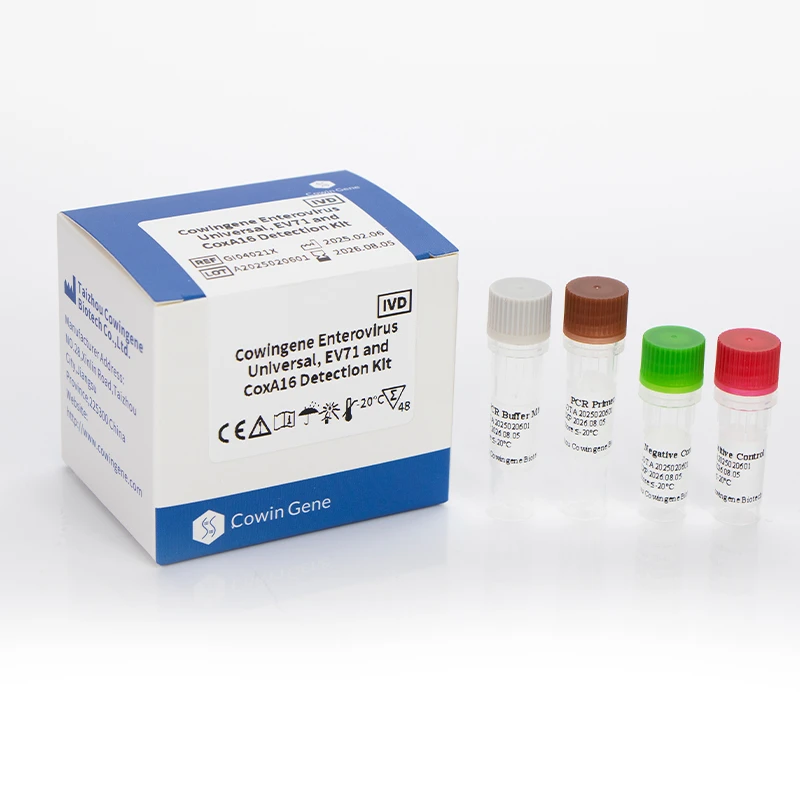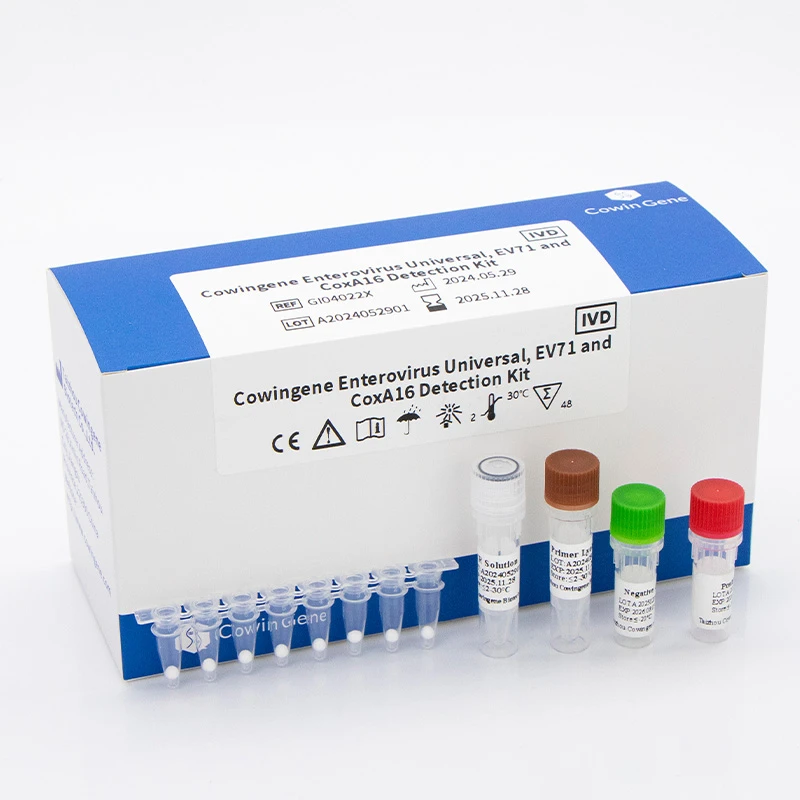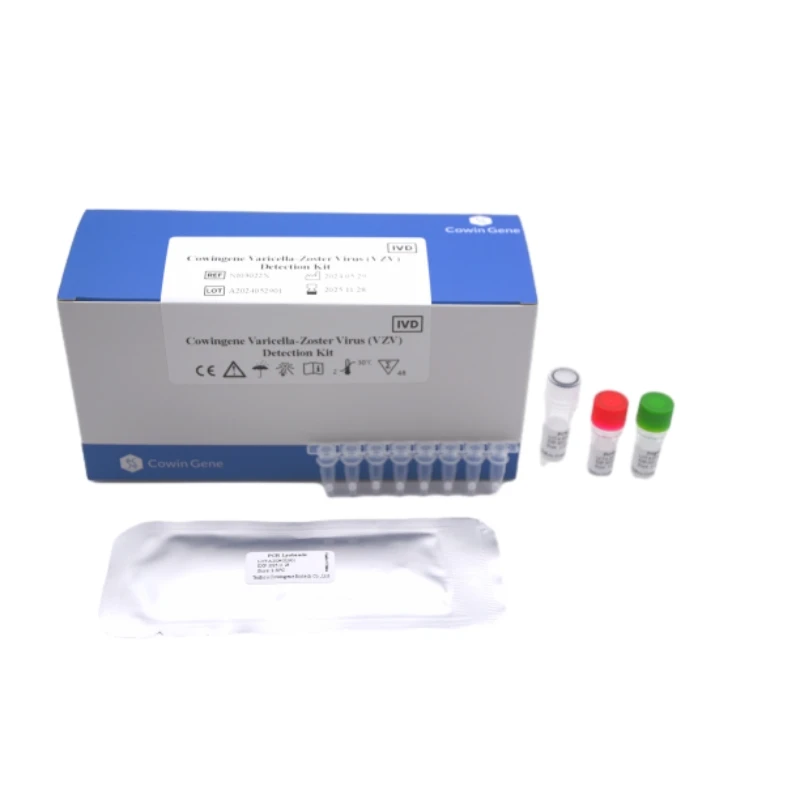Nov . 13, 2025 21:30 Back to list
Understanding HSV PCR DNA Test: Key Insights & Applications
What is the HSV PCR DNA Test and Why Does it Matter Globally?
The hsv pcr dna test — or herpes simplex virus polymerase chain reaction DNA test — is one of those quietly transformative tools in modern medicine. In simple terms, it’s a diagnostic method that allows doctors to detect traces of herpes virus DNA in a patient’s sample. Why should that matter on a global scale? Well, herpes infections remain widespread, affecting hundreds of millions worldwide, often silently or with subtle symptoms. Early, accurate detection can radically improve management, reduce transmission, and ease public health burdens everywhere.
Understanding this test’s technology and applications basically connects you with a bigger conversation on infectious disease control—something the World Health Organization consistently flags as vital.
Mini takeaway: HSV PCR DNA testing is a critical tool for timely detection of herpes infections, shaping healthcare outcomes worldwide.
The Global Challenge: Why Accurate Herpes Testing is Essential
Herpes simplex virus (HSV) infections have a global prevalence estimated by WHO to affect over 3.7 billion people under age 50 for HSV-1 and about 491 million for HSV-2. The challenge comes not only from how contagious HSV can be but from how easily it can go unnoticed. Traditional antibody tests rely on the body’s immune response, which can lag behind infection or remain unclear in early stages.
That’s where the hsv pcr dna test steps in with a huge advantage: it detects the virus’s genetic material directly. According to a recent ISO report on diagnostic test accuracy, PCR-based DNA tests improve early-stage viral detection significantly, reducing false negatives.
In real terms, this means quicker diagnosis means faster treatment, lower chances of spreading the virus, and better management strategies, especially in pregnant women and immunocompromised patients.
Mini takeaway: PCR DNA testing offers a precision solution to a significant global health challenge — early, clear HSV diagnosis.
Defining the HSV PCR DNA Test: How Does It Work?
The HSV PCR DNA test is a molecular diagnostic method that uses Polymerase Chain Reaction (PCR) technology to amplify segments of the herpes simplex virus’s DNA found in a patient's clinical sample—like blood, cerebrospinal fluid, or lesion swabs.
Unlike antibody tests that measure immune response, PCR detects actual viral DNA, making it highly sensitive and specific. It can differentiate between HSV-1 and HSV-2 strains, a detail that’s important clinically, since HSV-2 is more linked with genital herpes.
In the broader context, this test exemplifies how molecular diagnostics advances enable precision medicine, helping clinicians make personalized decisions, reduce unnecessary treatments, and plan public health interventions.
Mini takeaway: The HSV PCR DNA test detects viral DNA directly, providing accurate, early-stage herpes diagnosis compared to traditional methods.
Key Components and Considerations of the HSV PCR DNA Test
1. Sensitivity and Specificity
Many virologists say PCR testing’s main strength lies in its high sensitivity — able to detect minute amounts of viral DNA even before symptoms appear. Specificity is equally important; false positives can cause unnecessary anxiety, so careful primer design and quality controls are essential.
2. Sample Type and Collection
HSV DNA testing works best on lesions or skin swabs but can also detect virus in fluids (e.g., CSF in encephalitis cases). The quality of sample collection impacts accuracy; poorly collected samples lead to false negatives or inconclusive results.
3. Turnaround Time
PCR tests can generate results in just a few hours compared to days for serology testing. This speed helps with fast clinical decisions — particularly important in neonatal herpes or suspected meningitis.
4. Cost and Accessibility
While PCR tests are more costly than some alternatives, decreasing technology costs and wider lab availability are driving broader use. Some regions still struggle with access, highlighting an ongoing equity challenge.
5. Differentiation of HSV Types
A critical feature is that PCR can distinguish between HSV-1 and HSV-2, information that shapes treatment and counseling.
6. Laboratory Standards and Quality Assurance
Compliance with ISO standards for molecular diagnostics ensures reliability. Labs that don’t maintain these standards risk inaccurate results, undermining trust in testing.
Mini takeaway: Understanding the nuances of PCR diagnostics—like sample quality, speed, and type differentiation—is key to unlocking their clinical potential.
Global Applications of the HSV PCR DNA Test Across Sectors
It’s remarkable how diverse the real-world applications of HSV PCR DNA testing have become. Here are some snapshots:
- Healthcare: Essential for neonatal screening, immunocompromised patients, and genital ulcer diagnosis.
- Public Health Programs: Used in epidemiological studies to map HSV prevalence, supporting prevention campaigns.
- Research: Vital in vaccine and antiviral drug development where precise viral load assessment is crucial.
- Resource-Limited Settings: Rapid PCR platforms enable basic diagnostic services in parts of Africa and Asia, improving maternal and child health outcomes.
In post-disaster zones with disrupted health infrastructure, PCR testing can detect outbreaks early, guiding interventions that prevent larger epidemics. Oddly enough, while the technology feels cutting-edge, it’s often a frontline defense in very low-resource environments.
| Specification | Details |
|---|---|
| Sample Types | Skin lesion swabs, blood, cerebrospinal fluid |
| Turnaround Time | 2–6 hours typical |
| Sensitivity | 95–99% |
| Specificity | 95–98% |
| Differentiation | HSV-1 vs HSV-2 |
| Regulatory Standards | ISO 15189, CE mark |
Mini takeaway: HSV PCR DNA testing proves invaluable across healthcare, research, and public health, helping save lives with early viral detection.
Advantages and Long-Term Value of HSV PCR DNA Testing
From a practical standpoint, the biggest advantage is precision: patients get faster, more reliable diagnosis, meaning less guesswork. This contributes to reducing stigma and improving patient trust, because nobody wants to endure ambiguous test results.
On a system-wide level, quick PCR testing helps hospitals manage outbreaks, track epidemiological trends, and allocate resources wisely. The investment is costly upfront but pays dividends by lowering long-term treatment costs and complications (think neonatal herpes or encephalitis aftermath).
There’s a solid social impact element too: it preserves dignity by offering clarity and allows people to make informed decisions regarding health and relationships.
Emerging Trends and Innovations in HSV PCR DNA Testing
The field isn’t static, thankfully. Labs and startups are integrating digital PCR, which pushes sensitivity and quantification even further. Portable PCR devices are becoming available—imagine rapid herpes testing at remote clinics or even in-home kits with a smartphone interface.
Automation and AI integration help labs reduce human error and speed up workflows. Sustainability-wise, manufacturers are exploring consumables with less plastic waste and energy-efficient thermal cyclers.
Regulatory bodies push for standards harmonization internationally, promising faster approvals and wider test availability.
Challenges and Practical Solutions in Deploying HSV PCR DNA Tests
No test is perfect. PCR can be vulnerable to contamination if protocols aren’t strict. Also, cost and infrastructure remain hurdles in low-income regions, meaning that the populations who need these tests most can be last to access them.
Innovative solutions include portable, battery-powered PCR devices and integration with telemedicine to extend specialist expertise virtually. Training local lab personnel also boosts accuracy and acceptance.
| Vendor | Test Type | Turnaround Time | Global Reach | Cost Efficiency |
|---|---|---|---|---|
| GeneLabs | Standard PCR | 4–6 hours | Global | Medium |
| FastGene Diagnostics | Real-Time PCR | 2–3 hours | Americas, Europe, Asia | High |
| MicroDetect | Portable PCR | Under 2 hours | Selective regions | Low |
Low cost depends on volume and availability
FAQ: Frequently Asked Questions About HSV PCR DNA Test
- Q1: How accurate is the HSV PCR DNA test compared to antibody testing?
- The HSV PCR DNA test offers higher accuracy in detecting active infections, especially in early stages or when lesions are present. Antibody tests reflect past exposure but don't always confirm current infection.
- Q2: Can the HSV PCR DNA test differentiate between HSV-1 and HSV-2?
- Yes, PCR technology can specifically identify and differentiate HSV types 1 and 2, which is important for clinical treatment and counseling.
- Q3: How long does it take to get results from an HSV PCR DNA test?
- Turnaround time typically ranges from 2 to 6 hours, depending on lab capacity, with some rapid tests providing results even faster.
- Q4: Is the HSV PCR DNA test suitable for newborns suspected of infection?
- Absolutely. PCR testing is the preferred method for diagnosing neonatal herpes because of its sensitivity and speed, critical to starting early treatment.
- Q5: How accessible is HSV PCR DNA testing in low-resource settings?
- Accessibility is improving with portable PCR devices and international aid programs, but challenges remain in infrastructure and training.
Conclusion: Why Investing in HSV PCR DNA Testing is a Step Forward
All things considered, the hsv pcr dna test represents an essential convergence of technology and public health. Its precision, speed, and ability to influence patient care profoundly can’t be overstated. Whether for frontline clinics, research labs, or global health organizations, this method provides clarity in a world where viral infections are often quietly spreading.
If you’re seeking more technical details or want to explore available products, you can start by visiting https://www.cowingene.com — a good nexus of innovation and accessibility in HSV diagnostics.
References:
Related PRODUCTS
-
Understanding Monkeypox Testing PCR – Global Health & Diagnostic Insights
NewsNov.24,2025 -
Comprehensive Guide to Monkey Pox Detection: Methods, Applications & Innovations
NewsNov.23,2025 -
Essential Guide to Monkeypox Detection: Technologies, Applications & Future Trends
NewsNov.23,2025 -
Understanding Strep B Test Cost: Global Insights and Healthcare Impact
NewsNov.22,2025 -
Group B Strep DNA Test – Fast, Accurate Screening to Prevent Neonatal Infection
NewsNov.21,2025 -
Essential Guide to Group B Strep Test Kits: Benefits, Uses & Innovations
NewsNov.20,2025


